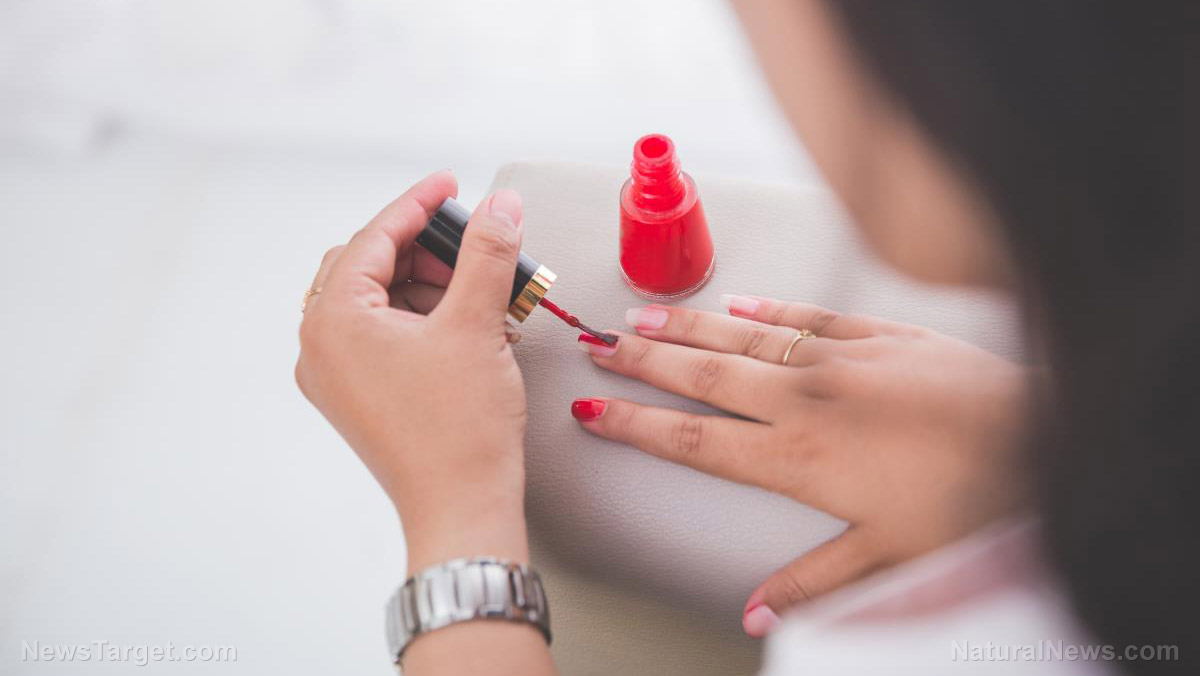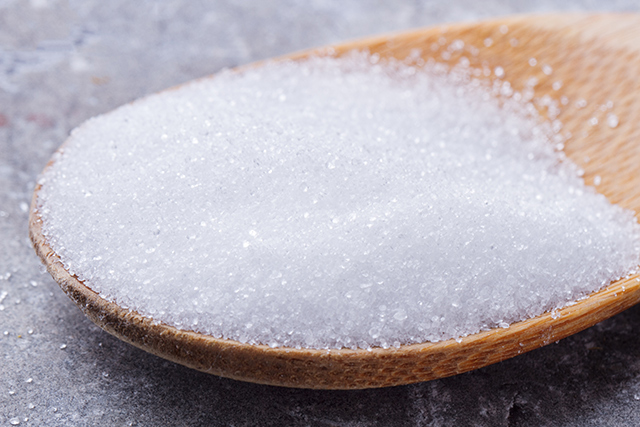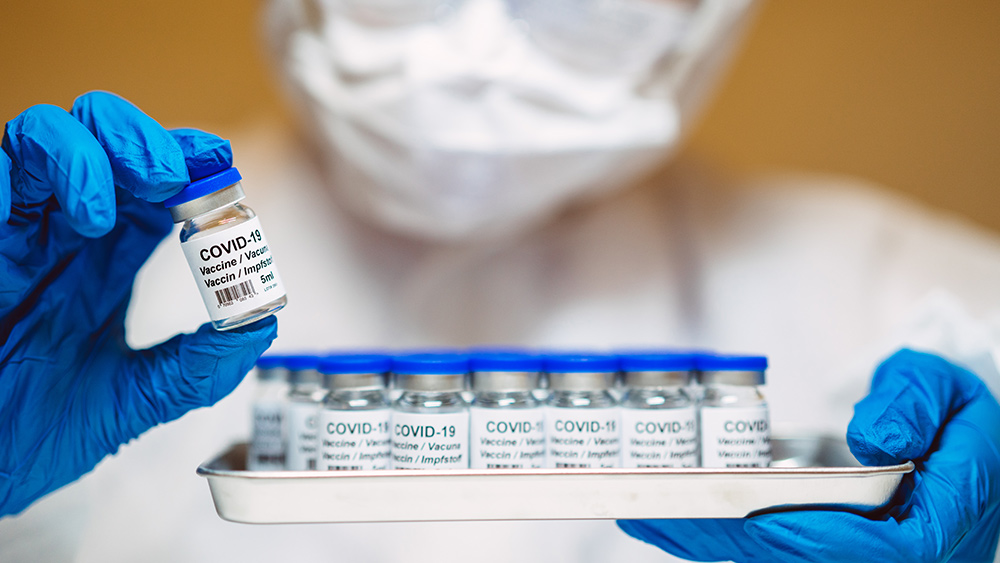 Parler
Parler Gab
Gab
- Formaldehyde and its "releasers" are widely used as preservatives in skincare, hair and nail products. Regulatory bodies like the Cosmetic Ingredient Review allow up to 0.2 percent in products, but repeated exposure, even at low levels, may weaken the immune system and contribute to health harms.
- Formaldehyde is classified by the WHO’s IARC as a Group 1 carcinogen. Prolonged use can trigger allergic reactions, worsen eczema and inflame the respiratory tract. Studies also link it to immune system suppression, akin to how chemo depletes immune cells. Its role as a known allergen means many people are prone to adverse reactions.
- Formaldehyde-releasers are found in everyday items like lotions, shampoos, styling gels, nail polishes and even "hypoallergenic" baby products. They’re added to extend the shelf life of water-based products, making avoidance tricky unless consumers actively screen labels for hidden names like diazolidinyl urea or bronopol.
- Some brands now use non-formaldehyde preservatives, such as radish root ferment, sulfite-based systems or microbial cultures (e.g., lactobacillus).
- To reduce risks, limit exposure by choosing preservative-free options or cleaner products. Avoid multiple products containing formaldehyde-releasers daily (e.g., shampoo, lotion, nail polish). Label literacy is critical, as "formaldehyde-free" claims may omit hidden derivatives.
Formaldehyde and formaldehyde releasers: Industrial uses and toxicity
Formaldehyde, also called methylene oxide or formalin, is a colorless, pungent gas classified by the International Agency for Research on Cancer (IARC) as a Group 1 carcinogen. It is a foundational component in many industrial applications, from embalming fluid to household cleaners. Formaldehyde releasers, meanwhile, refer to organic compounds that slowly release formaldehyde over time. Names like DMDM hydantoin, diazolidinyl urea, quaternium-15, imidazolidinyl urea and bronopol are among the more common culprits. These agents are favored in cosmetics because they enable gradual formaldehyde release, allowing formulation at lower concentrations while maintaining antimicrobial efficacy. In cosmetics, formaldehyde and its derivatives serve as preservatives, critical for preventing bacterial growth in water-based products like lotions, shampoos and moisturizers. Their slow-release mechanism is both a design feature and a liability. By producing formaldehyde as they break down, these substances theoretically circumvent immediate toxicity. However, repeated or prolonged use introduces a stealthier danger: Low, chronic doses of formaldehyde, when absorbed through the skin or inhaled, compromises health over time. The CIR’s 0.2 percent guideline reflects a cautious middle ground, but critics argue that even that threshold may not account for cumulative exposure across multiple products. While formaldehyde does not bioaccumulate in tissues, its persistent presence in daily routines, such as your daily skincare, hair and nail products, can overwhelm your body’s detoxification pathways.Health impacts: Immune weakening and beyond
Studies have linked formaldehyde to immunotoxicity, particularly in weakening innate immune defenses, a finding underscored by its role in therapies that deplete immune cells, like chemotherapy. Skin exposure to formaldehyde can also exacerbate allergic reactions and eczema in sensitive individuals, while inhalation irritates the respiratory tracts. The IARC’s carcinogenic classification, which is based on strong evidence of nasal and throat cancers in occupational settings, adds a layer of unease. While definitive links to consumer products remain debated, the synergistic effect of other chemicals in these formulations complicates risk assessments. Additionally, formaldehyde is listed as a contact allergen by the North American Contact Dermatitis Group. Formaldehyde releasers are pervasive. Skin care products, including anti-aging serums and moisturizers, frequently include them. Hair care products like shampoos, conditioners and styling gels also use them to prolong shelf life. (Related: The hidden dangers of phenoxyethanol in cosmetics and personal care products.) Nail polishes and hardeners also rely on these preservatives, exposing users to vapors and threatening to cause allergic reactions upon skin contact. Even baby wipes and "hypoallergenic" products are not immune, highlighting the non-selective nature of this additive.Formaldehyde and formaldehyde releaser alternatives
To avoid these harmful ingredients, consumers can opt for products that contain other preservatives instead of formaldehyde. Sulfite- or borate-based systems, botanical extracts like radish root ferment and microorganisms such as Lactobacillus cultures provide safer alternatives. Ingredients like phenoxyethanol, though not without its own caution labels, are often seen as a transitional step as the industry evolves. Transparency choices are key; third-party certifications like ECOCERT or Leaping Bunny (Cruelty Free International) often flag formaldehyde-free products. The body treats formaldehyde as an exogenous toxin, primarily metabolizing it into formate via cytochrome P enzymes in the liver. Contrary to detox marketing, no specific protocol accelerates this process. However, supporting liver health through antioxidants (e.g., vitamin C and cruciferous vegetables) may aid detox pathways. The acceptance of formaldehyde releasers reflects a regulatory disconnect between incremental safety assurances and shifting consumer demands. As awareness grows, the onus shifts to manufacturers and policymakers to prioritize non-toxic alternatives without sacrificing shelf stability. Consumers, meanwhile, must adopt label literacy, recognizing that "formaldehyde-free" does not always imply safety. Identifying closely named derivatives is also crucial. This story is not medical advice and is not intended to treat or cure any disease. Always consult with a qualified naturopathic physician for personalized advice about your specific health situation or concern. Visit Health Ranger Store and Brighteon Store to find lab-verified skincare products that are free from harmful chemicals like formaldehyde and formaldehyde releasers. Check out NaturalNews.com, an excellent resource for articles where you can learn more about different cosmetic ingredients that can harm your health and how to avoid them. You can also try Brighteon.ai, an AI model created by Mike Adams, also known as the Health Ranger. This model is available as a free download to be run locally and is designed to help share and decentralize knowledge. By doing so, it aims to bypass censorship and empower people with knowledge. If you're searching for a platform that champions uncensored video content and free speech, particularly for discussions on nutrition, natural medicine, ingredients and related topics, visit Brighteon.com, a website that offers a space for open dialogue and exploration of these subjects without restrictions. Brighteon.IO and Brighteon.social are two free speech social media sites that enable users to openly discuss health, nutrition, ingredients, toxicity and related topics without censorship. Watch the video below to learn more about all-natural Shampoos and Shampoo bars that can help you avoid toxic chemicals while also supporting healthy hair. This video is from the Health Ranger Store channel on Brighteon.com.More related stories:
The hidden harms of Sorbic Acid: An environmental and health concern. Sodium benzoate in personal care products: A threat to consumer health. The dangers of Propylparaben: A stealthy threat in personal care products. Sources include: Brighteon.AI NaturalNews.com Brighteon.comAging is inevitable but suffering is optional
By Lance D Johnson // Share
Study: Popular sugar substitute ERYTHRITOL may harm the brain’s blood vessels
By Ava Grace // Share
Pesticide liability bills spark national debate over corporate immunity and public health risks
By Willow Tohi // Share
By Lance D Johnson // Share
Governments continue to obscure COVID-19 vaccine data amid rising concerns over excess deaths
By patricklewis // Share
Tech giant Microsoft backs EXTINCTION with its support of carbon capture programs
By ramontomeydw // Share
Germany to resume arms exports to Israel despite repeated ceasefire violations
By isabelle // Share









